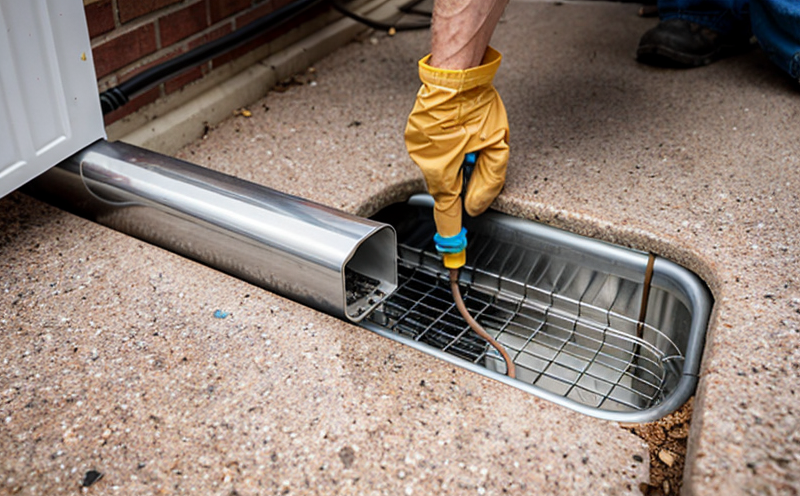Condensate drain inspection
In HVAC and ventilation systems, condensate drains play a critical role in ensuring that excess moisture is efficiently and safely removed from the system. Regular inspections of these components are essential for maintaining optimal performance and preventing potential issues such as mold growth, corrosion, and equipment failures.
The primary purpose of a condensate drain inspection is to verify that the drainage system functions effectively without blockages or leaks. This service involves examining the entire path from where condensation accumulates within the HVAC components down to its final discharge point outside the building. Proper functioning ensures that water does not accumulate, which could lead to significant problems in both residential and commercial settings.
During an inspection, several key areas are typically examined:
- The traps installed at critical points of the condensate system
- The condition of the piping used for conveyance
- The operation of any check valves present
- The state of the final discharge point where water exits the building
Proper inspection techniques include visual examination, pressure testing, and flow rate measurement. These methods help identify potential issues before they escalate into more serious problems.
Industry standards such as ASHRAE (American Society of Heating, Refrigerating, and Air-Conditioning Engineers) provide guidelines for best practices in HVAC maintenance, including regular inspections of condensate drains. Compliance with these standards ensures that facilities meet regulatory requirements while also enhancing operational efficiency.
Applied Standards
The following international standards are relevant to the inspection and maintenance of condensate drains:
- ASHRAE Standard 188: Legionella Risk Management in Building Water Systems
- ISO 15843-7:2015: Ventilation — Part 7: Testing and balancing of building ventilation systems
These standards emphasize the importance of maintaining proper condensate drain function to prevent Legionella contamination risks and ensure efficient operation of HVAC systems.
Industry Applications
| Application | Description |
|---|---|
| Hospital settings | To prevent the spread of Legionella bacteria, ensuring that condensate drains are free from blockages is crucial. |
| Offices and commercial buildings | Avoiding water damage and ensuring compliance with building codes by maintaining effective condensate drainage systems. |
| Data centers | Protect sensitive electronic equipment from moisture-related failures through regular inspections of condensate drains. |
| Residential homes | Preventing mold growth and structural damage by ensuring proper condensation management in HVAC systems. |
- Hospitals: Regular inspection helps prevent the spread of Legionella bacteria, which can be fatal if contracted.
- Offices/Commercial buildings: Avoiding water damage and ensuring compliance with building codes.
- Data centers: Protect sensitive electronic equipment from failures due to moisture.
- Residential homes: Prevent mold growth and structural issues by maintaining effective condensation management.
Eurolab Advantages
EuroLab offers a comprehensive suite of services tailored specifically for HVAC and ventilation systems, including detailed inspections of condensate drains. Our team of experts ensures that all aspects of your system are thoroughly evaluated using state-of-the-art equipment and methodologies.
- Comprehensive Evaluation: We provide a thorough assessment covering every part of the condensate drainage system.
- Expertise: Our technicians have extensive experience in HVAC systems, ensuring accurate identification and resolution of issues.
- Timely Reporting: Results are provided promptly so that necessary actions can be taken without delay.
- Regulatory Compliance: Ensuring adherence to relevant international standards like ASHRAE and ISO.
EuroLab's commitment to quality, accuracy, and reliability makes us the preferred choice for HVAC professionals seeking reliable inspections of their condensate drains.





